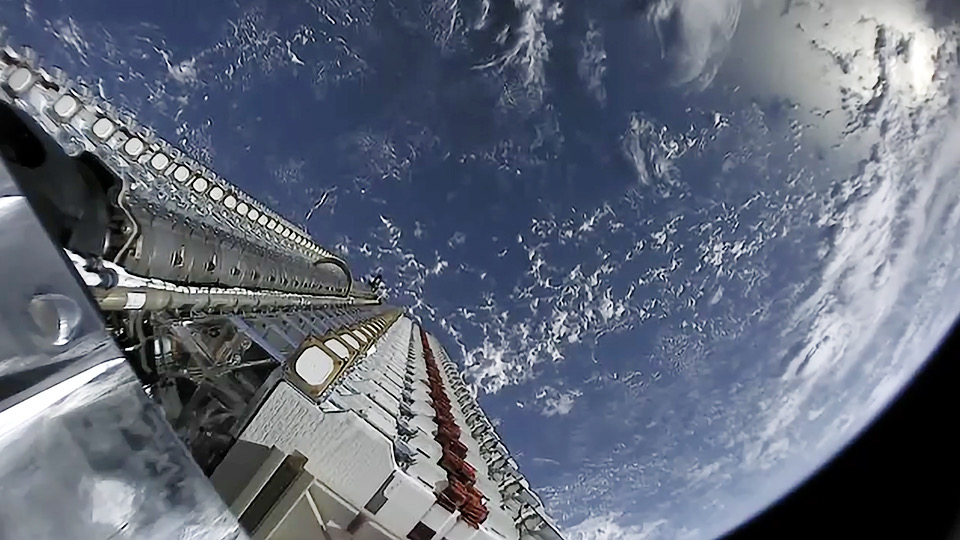· space brief · 4 min read
Space Brief 28 Feb 2025
Today's brief covers defense industry dynamics, advancements in quantum sensor technology, and geopolitical challenges impacting military space operations.

📄Top Stories
The space sector witnesses pivotal developments as the Pentagon calls for increased industry collaboration to enhance 5G interoperability. Concurrently, DARPA seeks breakthroughs in quantum sensors for rugged fieldwork, while the impending changes in Germany’s government could impact the US defense industry’s market dynamics.
📰Detailed Coverage
Pentagon Calls for Industry Partnership in 5G Development
The Pentagon is emphasizing the need for deeper industry collaboration to develop Open Radio Access Networks (O-RAN) for 5G, essential for military interoperability. Senior communications officer Zachary Taylor underscores the importance of open feedback between industry partners and the military to drive innovation and meet warfighter needs.
This initiative aligns with efforts to advance military communication infrastructures that could be bolstered by satellite-based platforms, enhancing tracking and operational capabilities.
Read the full story: Breaking Defense
DARPA’s Quest for Robust Quantum Sensors
DARPA is pioneering development in quantum technology to create field-resistant quantum sensors. These advanced sensors are envisioned to serve as precise navigation tools, offering alternatives to GPS with their superior sensitivity. However, the challenge remains to mitigate their susceptibility to interference.
Such advancements could revolutionize satellite-based navigation systems, ensuring resilience in diverse operational environments and enhancing strategic military capabilities.
Read the full story: Breaking Defense
Challenges Ahead for US-German Defense Relations
Analysts warn of potential difficulties for the US defense industry due to shifting political landscapes in Germany, with new leadership aiming for decreased reliance on American defense support. This geopolitical change may affect future satellite collaborations and military alliances.
The development highlights the importance of international partnerships and their influence on global satellite defense projects, potentially affecting satellite deployment strategies.
Read the full story: Breaking Defense
Pentagon Leadership Changes Indicative of Strategic Shifts
An internal restructuring at the Pentagon, viewed as a pre-emptive measure against future crises, underscores the need for adaptability within military operations. Former intelligence head Dennis Blair labels this as a sign of turbulent times ahead, hinting at broader implications for defense strategies.
This move could influence military priorities involving satellite utilities and defense readiness, emphasizing the critical role of real-time satellite data access in strategic operations.
Read the full story: Breaking Defense
Preparing the Defense Industrial Base for Future Demands
A webinar organized by Breaking Defense explores how the defense industrial base can enhance collaboration and surge capacities to meet future demands. This initiative aims to equip industry leaders with strategic foresight, impacting future military support systems, potentially affecting satellite technology deployment.
Read the full story: Breaking Defense
🛰️Satellite Spotlight
- Satellite Name: OBJECT M
- NORAD ID: 55259
- Launch Date: 2023-01-15
- Mission: Part of a space observation initiative, OBJECT M contributes to data collection for Earth observational studies.
- Orbit: Inclination 97.2598°, Period 16.4577 rev/day, Eccentricity 0.0009815
- Operator: GHK/JIUTS
- Fun Fact: OBJECT M, also known as Jin Zijing 3, utilizes cutting-edge CubeSat 6U technology to optimize space and efficiency in capturing high-resolution imagery.
Current TLE Data:
1 55259U 23007M 24335.35364217 .11798752 24803-5 27193-3 0 9993
2 55259 97.2598 59.6266 0009815 275.2371 84.7812 16.45769587105680Track this satellite in real-time on our web app: Track OBJECT M
🚀Upcoming Space Launches
March 1
- ExPace Kuaizhou-1A:
- Unknown Payload from Jiuquan Satellite Launch Center, People’s Republic of China (09:51 UTC)
- Details TBD.
March 2
-
SpaceX Falcon 9:
- Starlink Group 12-20 from Cape Canaveral SFS, FL, USA (01:57 UTC)
- A batch of satellites for the Starlink mega-constellation - SpaceX’s project for space-based Internet communication system.
-
Galactic Energy Ceres-1:
- Unknown Payload from Jiuquan Satellite Launch Center, People’s Republic of China (07:49 UTC)
- Details TBD.
-
Russian Space Forces Soyuz 2.1b/Fregat-M:
- Glonass-K2 No. 14 from Plesetsk Cosmodrome, Russian Federation (22:00 UTC)
- Glonass-K2 is part of the fourth-generation satellite design for the GLONASS navigation system, comparable to GPS.
March 3
-
SpaceX Falcon 9:
- SPHEREx & PUNCH from Vandenberg SFB, CA, USA (03:09 UTC)
- SPHEREx will survey the sky in near-infrared light, gathering data on over 300 million galaxies and 100 million stars. PUNCH will focus on the Sun’s outer atmosphere and track coronal mass ejections.
-
Arianespace Ariane 62:
- CSO-3 from Guiana Space Centre, French Guiana (16:24 UTC)
- The CSO-3 is a high-resolution optical imaging satellite for the French military.
-
SpaceX Starship:
- Flight 8 from SpaceX Starbase, TX, USA (23:30 UTC)
- Eighth test flight of the two-stage Starship launch vehicle.
March 4
- SpaceX Falcon 9:
- Starlink Group 12-21 from Cape Canaveral SFS, FL, USA (06:28 UTC)
- A batch of satellites for the Starlink mega-constellation - SpaceX’s project for space-based Internet communication system.
March 6
- SpaceX Falcon 9:
- Transporter 13 (Dedicated SSO Rideshare) from Vandenberg SFB, CA, USA (06:39 UTC)
- Dedicated rideshare flight to a sun-synchronous orbit with dozens of small microsatellites and nanosatellites for commercial and government customers.
Note: Launch dates and times are subject to change due to technical or weather considerations.

Maurice Stellarski




